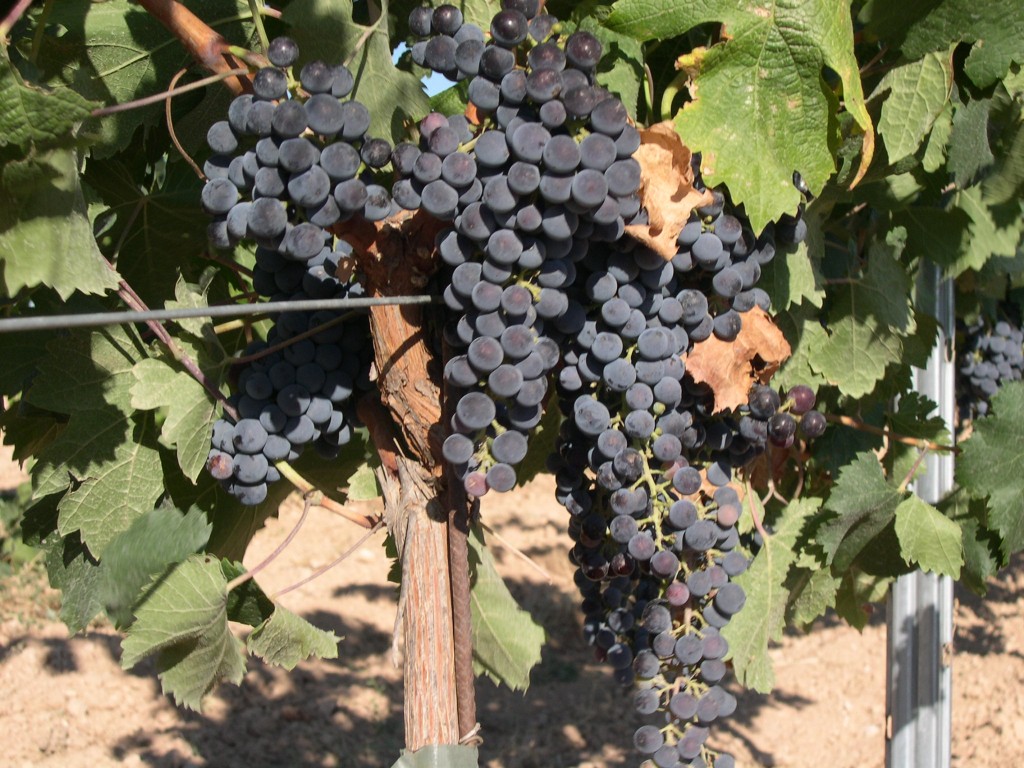A red wine grape named for the Old French word for a young blackbird, Merlot has risen to be, on estimate, the third most planted varietal in the world. A popular wine both as a varietal and as a blending grape, wines made from the Merlot grape are popular thanks to the flavors typical of the grape that most wine drinkers find very accessible.
History
Merlot is believed to be an offshoot of the Cabernet Franc grape, and a sibling of the Carmenere and Cabernet Sauvignon. The first recorded mention of the grape was by a Bordeaux official in 1784, and by 1855 it was being found in and around Venice, Italy.
By the 19th century, the Merlot grape was being planted with great regularity in the Medoc, or Left Bank, of the Gironde region of France. A severe frost in 1956 and vintages lost to rot in the 1960s lead French authorities in Bordeaux to ban new plantings of the grape between 1970 and 1975.
In the 1990s, Merlot saw a surge in popularity in the United States thanks to a 60 Minutes piece on the potential health benefits of wine and the chemical reservatrol found within it.
Merlot Grapes
Merlot grapes are identified by their loose bunches and large berries. The color of the grape is less blue/black than Cabernet Sauvignon and the skin tends to be thinner and with fewer tannins. Merlot grapes also tend to have a higher sugar content and lower malic acid when compared to the Cabernet Sauvignon grape.
Merlot grapes thrive in cold soil, with ferrous clay being particularly advantageous for growing the grape. Merlot vines tend to bud early, which does put them at risk for frost damage and rot thanks to the thin skin.
Ripening on average two weeks earlier than Cabernet Sauvignon, Merlot grapes exhibit a propensity to quickly overripen, even within a few days of having reached their initial ripeness level.
Regions
France is home to nearly two-thirds of the world’s total Merlot crop. Also growing Merlot are Italy (the nation’s 5th most planted grape), California, Romania, Australia, Argentina, Bulgaria, Turkey, Canada, Chile, New Zealand, South Africa, Switzerland, Croatia, Hungary, Montenegro, Slovenia, Washington State, and Long Island.
Merlot grows in many of the same regions as Cabernet Sauvingon, though in the cooler portions of those areas as warmer weather tends to make the grapes ripen too early.
Merlot Wine
As a single varietal wine, Merlot makes soft, velvety wines with plum flavors. Flavors commonly associated with Merlot include: cassis, black and red cherry, blackberry, blueberry, boysenberry, mulberry, ollalieberry, plum, olive (black and green), cola nut, bell pepper, fennel, humus, leather, mushroom, rhubarb, tobacco, tea, eucalyptus, laurel, mint, oregano, pine, rosemary, sage, sasparilla, and thyme.
When paired with food, the diversity of the grapes flavors lends itself to being paired with a wide range of foods. Softer, fruitier Merlot can share many of the same pairings as Pinot Noir, while lighter Merlot can go well with shellfish such as prawns and scallops. Merlot tends not to pair well with blue veined cheeses as the fruit flavors are overwhelmed by the flavor of the cheese.
